Wyoming’s small towns often look quiet, flat, and uneventful from the highway. Many travelers stop for gas, stretch their legs, and move on. Yet those who linger discover subtle charm, unplanned friendliness, and a rhythm that feels different from anywhere else. These ten Wyoming towns may seem boring at first, but they have a way of pulling visitors back.
1. Rawlins, Stillness with stories
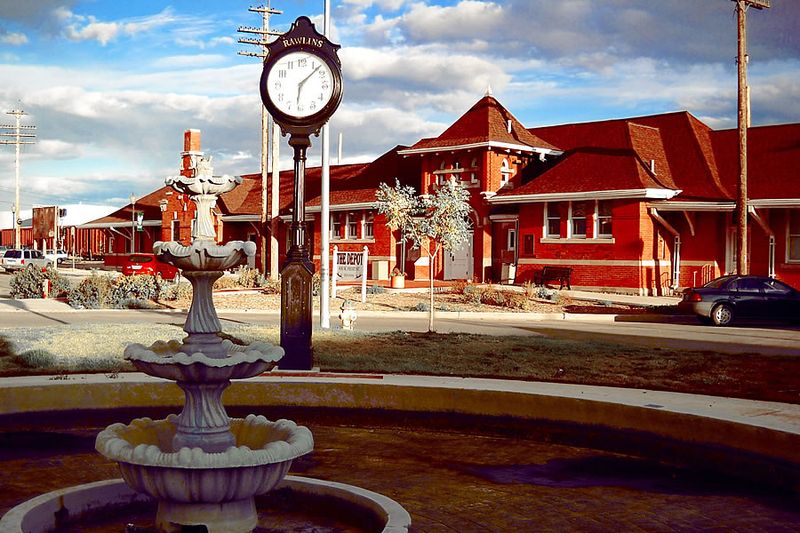
Rawlins sits along Interstate 80 and feels like a stopover town, but its frontier past runs deep. I start with the Wyoming Frontier Prison, where preserved cell blocks and guided tours set a stark tone. Exhibits explain escapes, daily routines, and the wider justice system that shaped the region. The building’s sandstone walls and iron doors tell stories that stick.
Outside, I follow a small self-guided walking route past murals and modest brick storefronts. Local cafés keep early hours, and conversation comes easy if you ask about weather or roads. The Carbon County Museum adds more context with ranching tools, photos, and railroad lore. Trails on the edge of town give quiet views toward sagebrush flats.
Rawlins does not try to entertain you at every turn. That helps me slow down and pay attention to details. The wind carries the sound of trains, and occasional pronghorn graze near the highway. I return for that unhurried pace and the layered history that the prison and museums preserve with care. In a state known for big parks, this small pocket of Wyoming grounds the story of travel in everyday life.
2. Douglas, The home of the jackalope
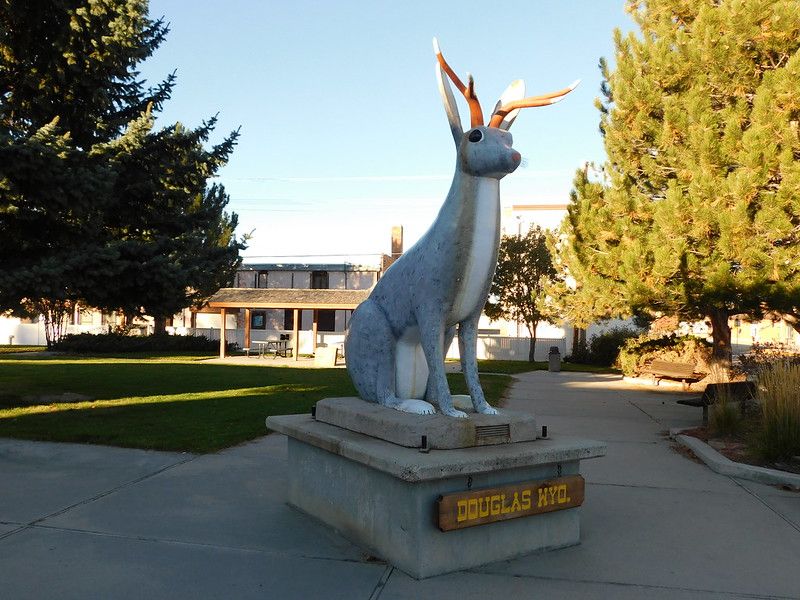
Douglas looks plain until you spot the giant jackalope statue downtown. I head there first, because the photo stop breaks the ice and gets people smiling. The local Chamber celebrates the quirky mascot with merchandise and stories that trace the myth back to local taxidermists. Around the corner, murals add color and a sense of local humor.
The Douglas Railroad Museum and Visitor Center fills in the town’s roots with rail equipment and crisp displays. I spend time reading plaques and asking volunteers for tips about drives in the surrounding plains. In summer, small community events bring families to the park. Coffee shops close earlier than in cities, so I plan stops in the morning.
What keeps me coming back is the balance between whimsy and routine. The jackalope gives Douglas an identity, but the town’s friendly pace makes the visit feel personal. Trails by the North Platte River give quiet walks with easy birdwatching. I leave with a stronger sense of Wyoming’s humor and hospitality, and I always mark Douglas on future routes.
3. Wheatland, Where time moves gently
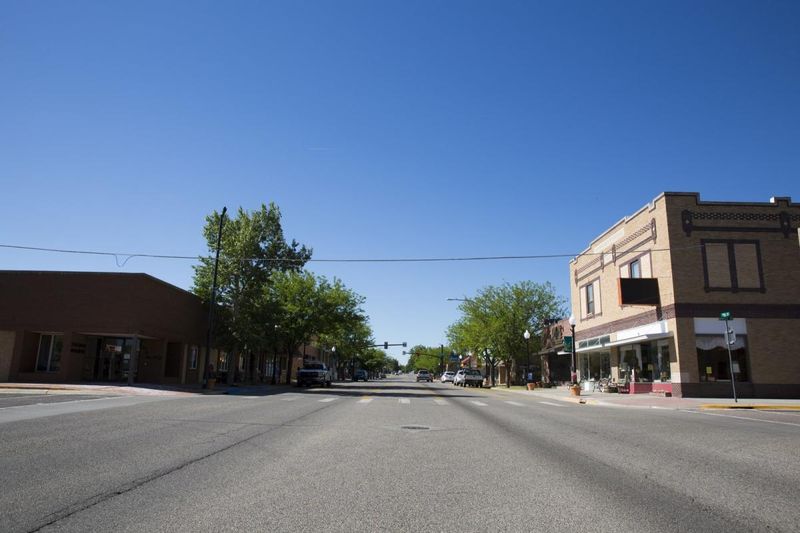
A farming hub that rarely makes headlines, Wheatland surprises visitors with tidy neighborhoods and relaxed parks. I like to start at Lewis Park, where cottonwoods cast broad shade and ball fields sit quiet between games. The Platte County Museum collects pioneer artifacts and photographs that trace ranching and irrigation projects. Volunteers greet visitors with practical tips.
Main Street restaurants keep menus simple and portions steady. Conversations drift toward weather, planting, and travel routes. I take a slow drive to nearby reservoirs for birdwatching and big-sky sunsets. The roads feel calm and let me reset after long hours on the interstate.
People describe Wheatland as stepping into a slower decade. I agree, and I mean it as praise. The pace helps me catch details like hand-painted signs and well-kept porches. When I return, I bring a book, comfortable shoes, and time to linger. In Wyoming, quiet towns like Wheatland hold the daily life that supports grand trips. I leave rested and ready for the next stretch.
4. Kemmerer, Birthplace of J.C. Penney and ancient fish fossils
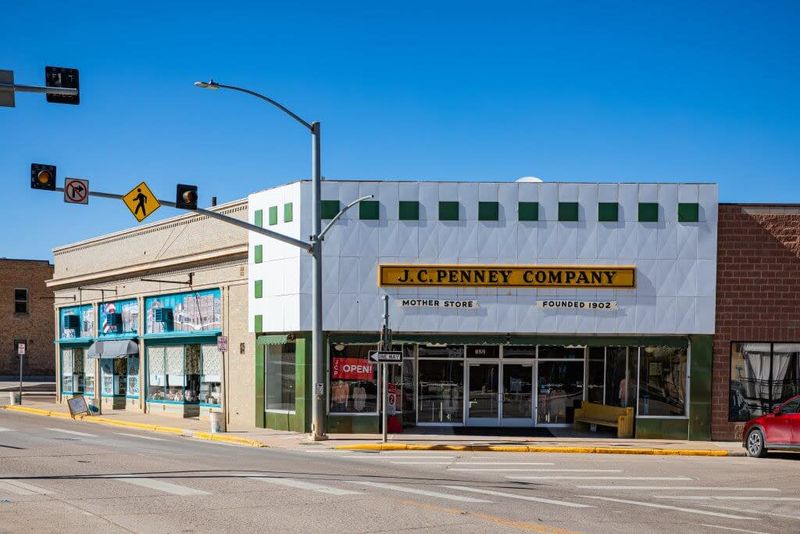
Kemmerer might seem sleepy, but it hides two clear draws. The first J.C. Penney store still stands on the triangular town square, where exhibits trace how a dry goods shop grew into a national chain. I browse old catalogs and storefront displays to see how everyday goods shaped frontier life. Staff members answer questions with helpful context.
A short drive leads to private fossil quarries that welcome visitors. I book ahead, bring sturdy clothing, and follow safety briefings before splitting limestone layers. The thrill comes when a clean fish outline appears on a slab. Guides help identify species and explain the ancient lake that preserved them.
Back in town, the Fossil Country Frontier Museum ties both stories together with mining, railroad, and household artifacts. Side streets stay quiet, and evenings fade early. I return to Kemmerer when I want hands-on discovery paired with small-town ease. The blend of retail history and paleontology feels practical and curious at once. It also shows how Wyoming connects deep time with daily routines.
5. Buffalo, Quiet streets, loud history
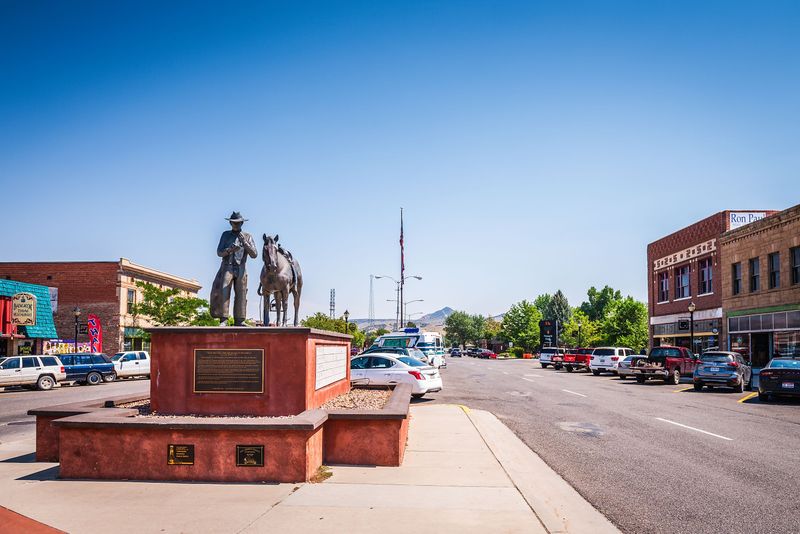
Set between the Bighorn Mountains and the plains, Buffalo keeps a modest downtown lined with century-old hotels. I stroll Main Street and peek into lobbies with pressed-tin ceilings and creaky staircases. The Jim Gatchell Memorial Museum presents military history, ranching gear, and well-documented local stories. Exhibits explain conflicts and treaties with care and detail.
Fans of the Longmire novels still show up, following reading lists and local tips rather than official tours. I grab a town map and mark bookstores, cafés, and scenic pullouts on the edge of the foothills. Clear mornings invite easy hikes in nearby canyons and picnic spots with shade. Even busy days feel measured.
Buffalo works because it does not rush. Shopkeepers greet you, then give space to browse. Benches along the sidewalk invite short pauses and people-watching. I return for that rhythm and for the way the mountains frame every errand. In Wyoming, this town offers a reliable base where history sits in plain view and the trailheads wait just up the road.
6. Green River, Railroad calm by the bluffs
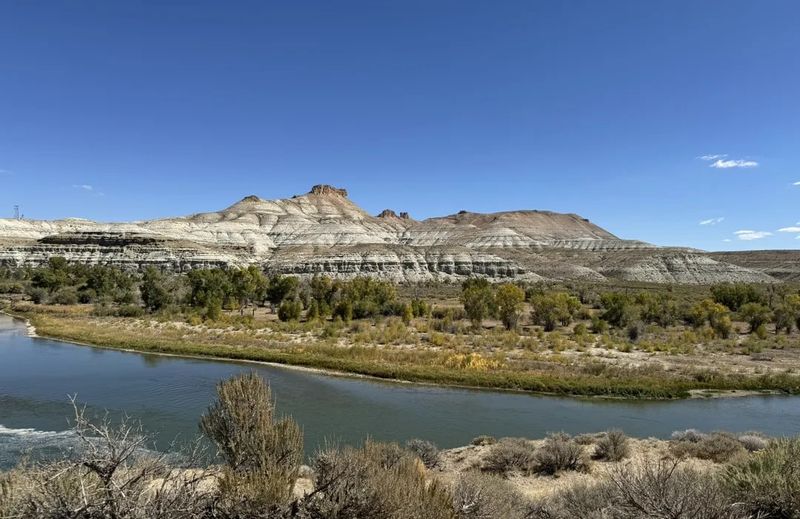
Freight trains pass all day, and residents hardly look up. I stand by the river and watch long consists slide past the sandstone bluffs, a steady backdrop to town life. The Sweetwater County Museum in nearby Green River offers context on railroads, trappers, and early settlement. Staff keep exhibits updated and easy to follow.
The river corridor hosts trails where I walk at sunrise to spot herons and waterfowl. Kayakers launch from quiet access points when flows cooperate. I check local conditions and wear the right layers because wind can shift fast. On hot afternoons, I retreat to shaded benches and let time pass.
Downtown stays modest, with storefronts that serve locals first. That makes the visit feel grounded and routine in a good way. I plan a picnic, carry water, and keep my schedule light. The reward comes in small moments, like echoing train horns and calm ripples below the cliffs. Green River shows another side of Wyoming, where a working railroad and a broad river set the town’s slow beat.
7. Torrington, Agricultural heart with community warmth
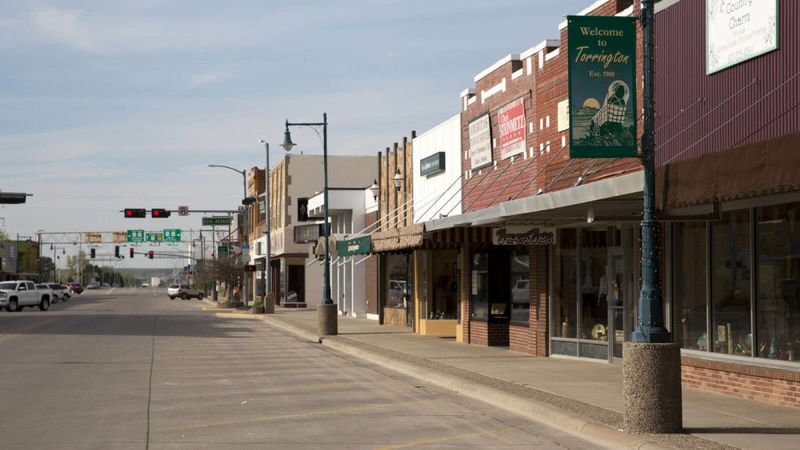
It’s mainly a service town for nearby farms, but the Goshen County Fairgrounds host small events that reveal Torrington’s personality. I check the calendar for rodeos, antique shows, and 4-H exhibitions. The Homesteaders Museum occupies an old depot and tells clear stories about irrigation projects and early settlers. Volunteers often share family histories that add depth.
On Main Street, storefronts carry practical goods and local crafts. People wave at strangers without hesitation, which sets a welcoming tone. I walk a few blocks at a time, then duck into a park when the sun feels strong. Side streets show neat yards and well-kept churches.
What brings me back is the sense of continuity. The town supports the fields, and the fields support the town. I leave with a better feel for how food systems work at ground level in Wyoming. When road trips need a reset, Torrington gives me clear skies, steady routines, and a calendar of small events that never feels crowded. It rewards unhurried visits and simple plans.
8. Thermopolis, Hot springs behind a sleepy façade
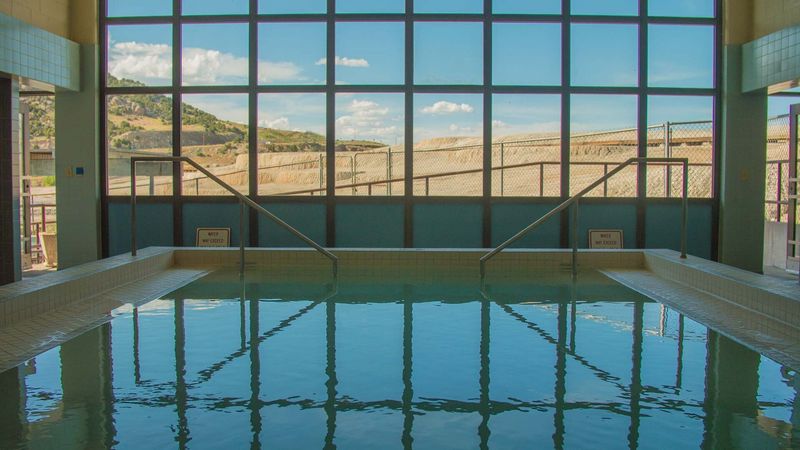
Thermopolis looks quiet until steam rises over its public mineral pools. I head to Hot Springs State Park for free soaking areas, boardwalks, and the suspension bridge. The state maintains good access, and signs explain the geology in plain language. The baths help me slow down and ease road weariness.
Next, I visit the Wyoming Dinosaur Center. The collection displays real fossils, prep labs behind glass, and field program information. Staff answer questions clearly and point to nearby dig sites that accept visitors with reservations. The mix of science and accessibility keeps me engaged.
In town, cafés run on simple schedules, so I plan meals ahead. Murals and small shops fill the gaps between activities. Evenings feel unhurried, and the river trail gives me a final walk before sunset. I return because the hot water and the science pair so well. In Wyoming, this place proves that a quiet main street can sit beside a world-class wellspring and a respected fossil hub.
9. Lusk, One main street and endless sky
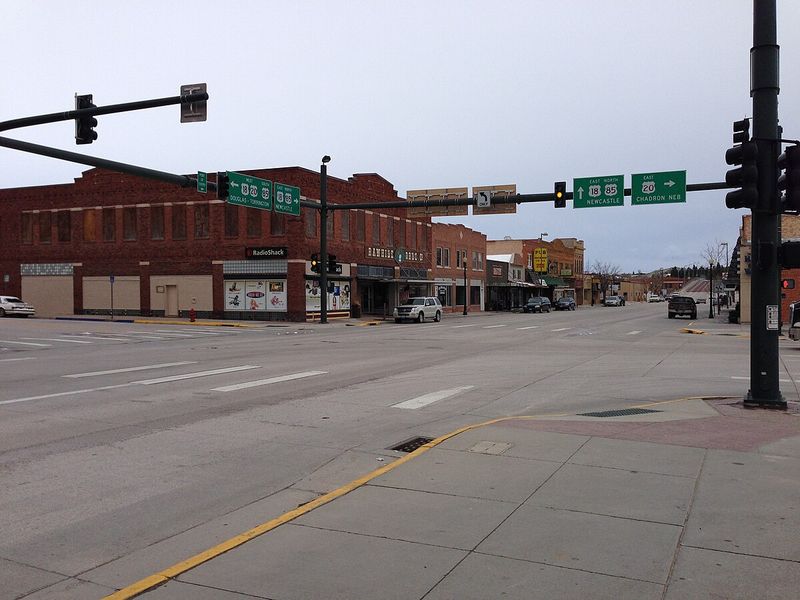
Lusk is easy to miss, yet many road trippers remember it best. I arrive with daylight to walk the short business district and talk with locals about road conditions. The Stagecoach Museum lays out photographs, wagons, and ranch gear that anchor the region’s story. Exhibits keep facts clear and focused.
As sunset nears, I drive a few miles outside town for open views. The horizon stretches and the sky turns wide and deep. On clear nights, the stars fill every corner, and traffic noise drops to a whisper. I keep a red-light flashlight, warm layers, and a charged phone for safety.
Lusk does not offer a long list of attractions, and that suits me. The calm forces me to slow down and listen. I study old storefronts, note the angle of the light, and trade greetings with people on evening walks. Wyoming rewards patience, and Lusk proves it with big skies and friendly talk that make short visits feel complete.
10. Evanston, Border town with a slower beat
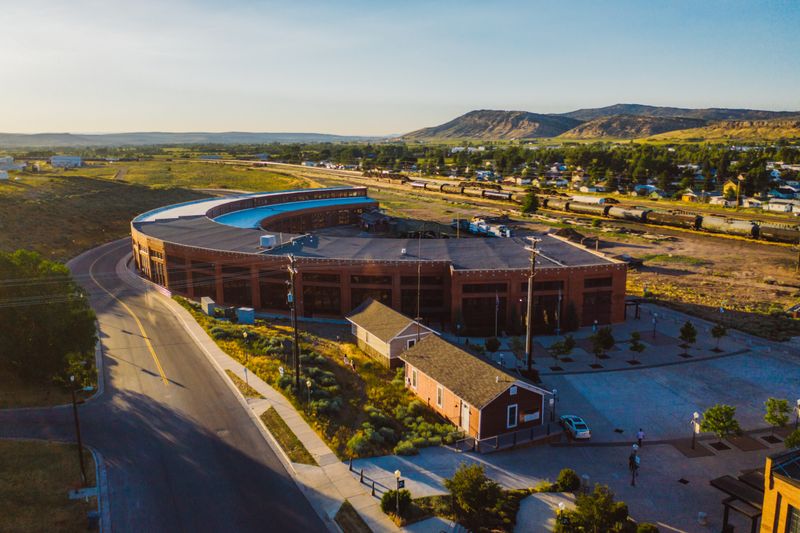
Evanston sits near the Utah line and keeps a compact historic district. I start at the Union Pacific roundhouse and yards, where restoration work highlights brick arches and steelwork. Nearby, the Chinese Joss House Museum preserves artifacts and tells the story of railroad-era communities with careful interpretation. Docents add context that sticks.
Downtown coffee shops close early, so I plan my day around morning stops and afternoon walks along the Bear River Greenway. The path follows water, wetlands, and simple bridges that invite birdwatching. Public art and signage mark local history without clutter.
Evenings stay quiet, which helps me reset after highway miles. I check community calendars for small festivals and markets that bring neighbors together. Evanston’s appeal lies in steady routines, restored spaces, and open skies. I often end a trip here because the slower beat feels intentional and kind. Wyoming shows its practical side in towns like this, where careful preservation pairs with everyday life and makes return visits feel natural.
Dear Reader: This page may contain affiliate links which may earn a commission if you click through and make a purchase. Our independent journalism is not influenced by any advertiser or commercial initiative unless it is clearly marked as sponsored content. As travel products change, please be sure to reconfirm all details and stay up to date with current events to ensure a safe and successful trip.